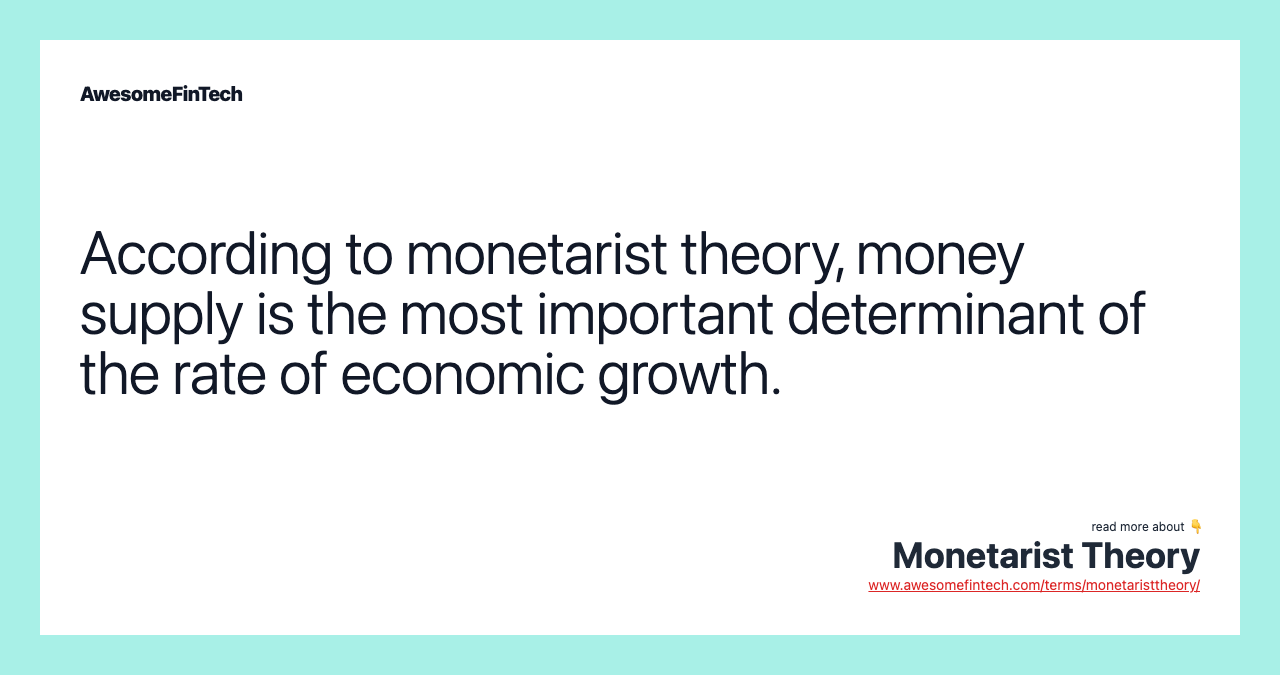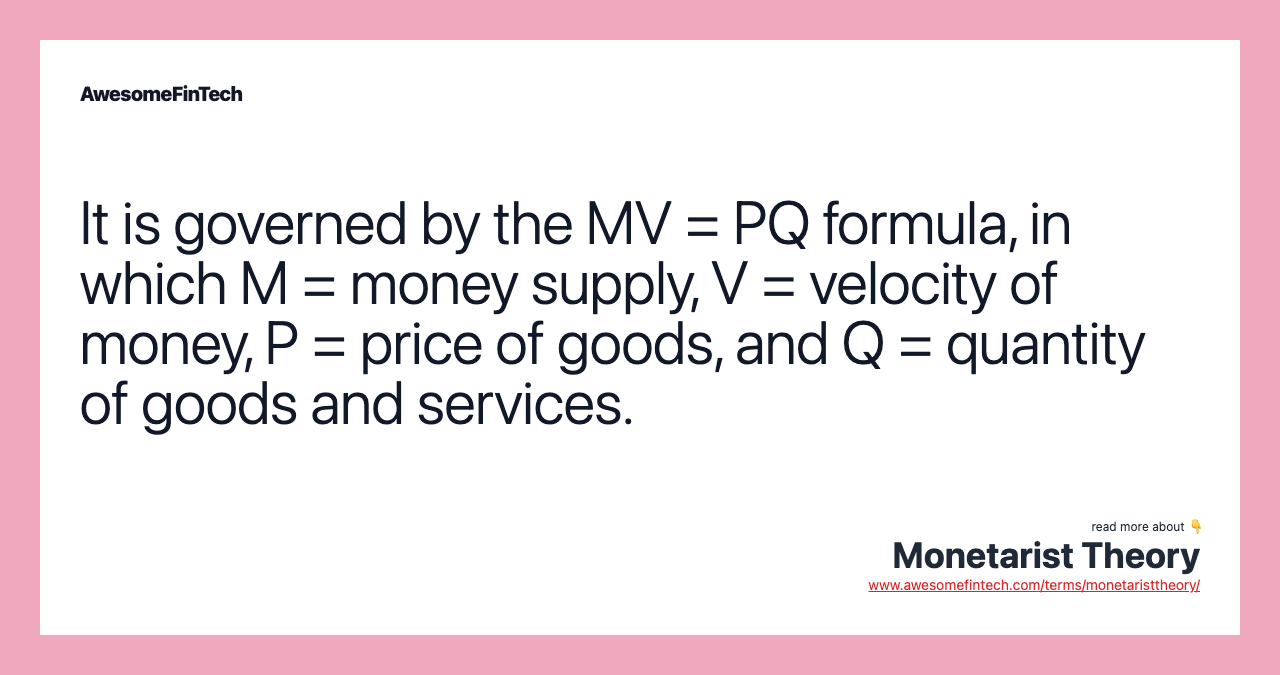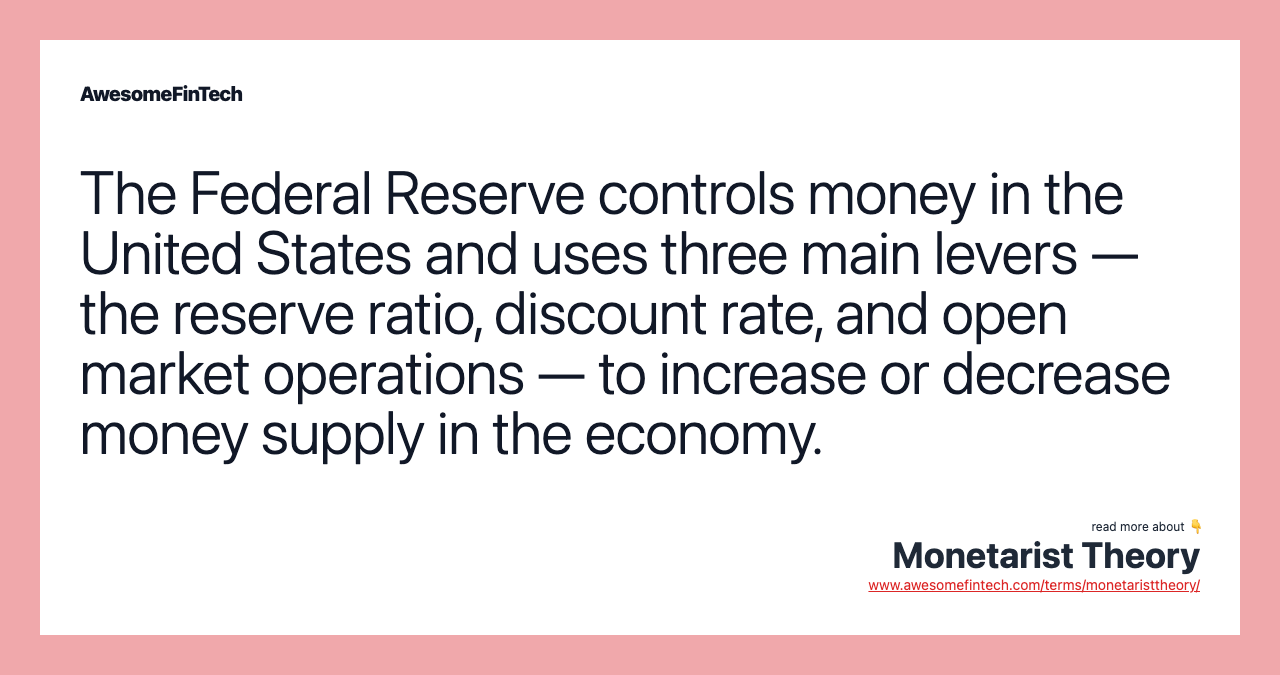Monetarist Theory
The monetarist theory is an economic concept that contends that changes in money supply are the most significant determinants of the rate of economic growth and the behavior of the business cycle. Monetarist theory is governed by a simple formula: MV = PQ, where M is the money supply, V is the velocity (number of times per year the average dollar is spent), P is the price of goods and services and Q is the quantity of goods and services. The Federal Reserve controls money in the United States and uses three main levers — the reserve ratio, discount rate, and open market operations — to increase or decrease money supply in the economy. It is governed by the MV = PQ formula, in which M = money supply, V = velocity of money, P = price of goods, and Q = quantity of goods and services. The monetarist theory is an economic concept that contends that changes in money supply are the most significant determinants of the rate of economic growth and the behavior of the business cycle.

More in Economy
What Is Monetarist Theory?
The monetarist theory is an economic concept that contends that changes in money supply are the most significant determinants of the rate of economic growth and the behavior of the business cycle. When monetarist theory works in practice, central banks, which control the levers of monetary policy, can exert much power over economic growth rates.
The competing theory to the monetarist theory is Keynesian economics.



Understanding Monetarist Theory
According to monetarist theory, if a nation's supply of money increases, economic activity will increase — and vice versa.
Monetarist theory is governed by a simple formula: MV = PQ, where M is the money supply, V is the velocity (number of times per year the average dollar is spent), P is the price of goods and services and Q is the quantity of goods and services. Assuming constant V, when M is increased, either P, Q, or both P and Q rise.
General price levels tend to rise more than the production of goods and services when the economy is closer to full employment. When there is slack in the economy, Q will increase at a faster rate than P under monetarist theory.
In the U.S., the Federal Reserve (Fed) sets monetary policy without government interference. The Fed operates on a monetarist theory that focuses on maintaining stable prices (low inflation), promoting full employment, and achieving steady gross domestic product (GDP) growth.
Controlling Money Supply
In the U.S., it is the job of the Fed to control the money supply. The Fed has three main levers:
Example of Monetarist Theory
Former Federal Reserve Chair Alan Greenspan was a proponent of monetarist theory. During his initial years at the Fed in 1988, he increased interest rates, decreasing growth and raising inflation rates, which almost touched five percent.
The U.S. economy tipped into recession during the early 1990s. In response, Chair Greenspan boosted economic prospects by commencing on a rate-cutting spree that resulted in the longest period of economic expansion in the history of the U.S. economy. A loose monetary policy of low interest rates made the U.S. economy prone to bubbles, culminating in the 2008 financial crisis and the Great Recession.
Related terms:
Who Is Alan Greenspan? How long was Greenspan Fed chair?
Alan Greenspan was the 13th chair of the Federal Reserve, appointed to an unprecedented five consecutive terms between mid-1987 and early 2006. read more
Easy Money
Easy money is when the Fed allows cash to build up within the banking system in order to lower interest rates and boost lending activity. read more
Economic Growth
Economic growth is an increase in an economy's production of goods and services. read more
Economics : Overview, Types, & Indicators
Economics is a branch of social science focused on the production, distribution, and consumption of goods and services. read more
Federal Discount Rate
The federal discount rate is the reference interest rate set by the Federal Reserve for lending to banks and other institutions. read more
Federal Reserve System (FRS)
The Federal Reserve System is the central bank of the United States and provides the nation with a safe, flexible, and stable financial system. read more
Federal Open Market Committee (FOMC)
The Federal Open Market Committee (FOMC) is the branch of the Federal Reserve System that determines the direction of monetary policy. read more
Full Employment
Full employment is a situation in which all available labor resources are being used in the most economically efficient way. read more
The Great Recession
The Great Recession was a sharp decline in economic activity during the late 2000s and was the largest economic downturn since the Great Depression. read more